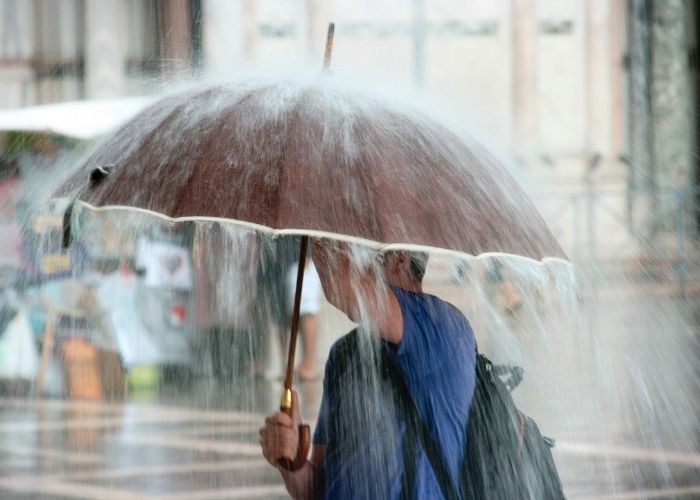MADRID – The long-awaited rain in Spain promises to fall from Friday to Wednesday. The arrival of a series of low-pressure areas offers the prospect of heavy rainfall (and also snow) in large parts of Spain.
On Friday, a first front will pass from the west. Rain then falls spread over almost the entire Iberian Peninsula. Meteorologists expect between 50 and 100 litres per square metre in western, central, and southern Spain and even more in the Mediterranean and the Pyrenees.
‘Vigorous and persistent rains’
The showers will be accompanied by a strong storm from the second half of Sunday at a point in the west of the country yet to be determined. Then the emphasis is on the rain showers in the southwest of the country. “In some areas in the south and east of the peninsula, the rains can be strong and persistent,” warns Rubén del Campo, spokesman for the State Meteorological Agency (Aemet).
Between 100 and 150 millimeters
In the mountains and the areas with the most precipitation, he expects between 100 and 150 millimetres per square metre. Del Campo expects the heaviest rains in western Galicia, southern Castilla y León, Extremadura, western Andalucia, and northern Aragon.
Snow
The snow line will be at 1,100/1,300 metres. Because it is cloudy, the maximum temperatures also drop. To such an extent that Friday afternoon will be five to six degrees colder than Thursday. Minimum temperatures, on the other hand, remain higher, especially in the south. Frost is reserved for mountainous areas.
The Canary Islands will be protected from showers for the first few days until the chance of rain there from Monday is also great.
Low-pressure areas and rains
On Friday the first front will bring between 5 and 15 millimetres of rain in most places. It is probably less in the Ebro Valley near Zaragoza. Meteorologists also do not expect much in southeastern Spain, including in the vicinity of Murcia, Almeria, and Cartagena.
The second front, which moves into Portugal and Spain from the northwest on Sunday, is unlikely to reach eastern and southeast Spain at all. It will move north across southwestern Spain from Sunday evening. In the west of Andalusia and Extremadura, it can rain heavily for the first time.
After this, the low-pressure area continues across Castile and Leon to the north of Portugal and Spain. It then shifts its course south again to arrive west of Morocco on Tuesday.
All the while, around the core of the system, new areas of precipitation are constantly moving into the southern half of Spain. Occasionally there are active shower clusters in between that can leave a lot of rain behind regionally.
Tenacious high-pressure areas
Southwestern Europe had been dealing with successive high-pressure areas for some time. They settled so well above Spain that low-pressure areas had no chance. Normally it rains a lot more during the first months of the year.
Numerous reservoirs in Spain are therefore well below their average levels for the time of year. In these winter months, on average, only 21% of the usual amount of rain fell across the country.
Unprecedented drought
The average amount of water reserves in all reservoirs is 24,619 hm3. This means they are at only 43.86% of the capacity, according to embalses.net. Last year at this time it was still 64%. A much more normal percentage in mid-March. Only the Basque Country and Navarra are in good shape in this regard. Their reservoirs contain almost 83 and 82% of their capacity respectively. It has not been this dry in Spain since 1995.
The region of Murcia in southwestern Spain is the worst at 21.6%. Andalusia, Castilla-La Mancha, and Extremadura follow with respectively 31%, 37.3%, and 37.8% of their capacity. It still has to rain a lot here to prevent a problematic summer.
Right now any rain is welcome for the bone-dry land and all crops. However, the first rain will not end up in the reservoirs. The soil is so dry everywhere that it takes a while before it is wet enough. Only then, the rainwater also reaches the reservoirs via rivers and other drainage channels. If the rain lasts longer, the water reservoirs will benefit. The water reservoirs in Spain are at their lowest level since 1995.
➡️ ¿Qué sucederá la próxima semana? Todavía existe incertidumbre, por lo que lo más adecuado es hablar de #probabilidad. Pero…
🤔 ¿Qué significa tener un 50% de probabilidad de superar los 5l/m²? @ElTiempo_tve Aquí tratamos de explicarlo 👇 pic.twitter.com/kKUFXVYw2n
— Arnaitz Fernández (@Armeteo) March 9, 2022


